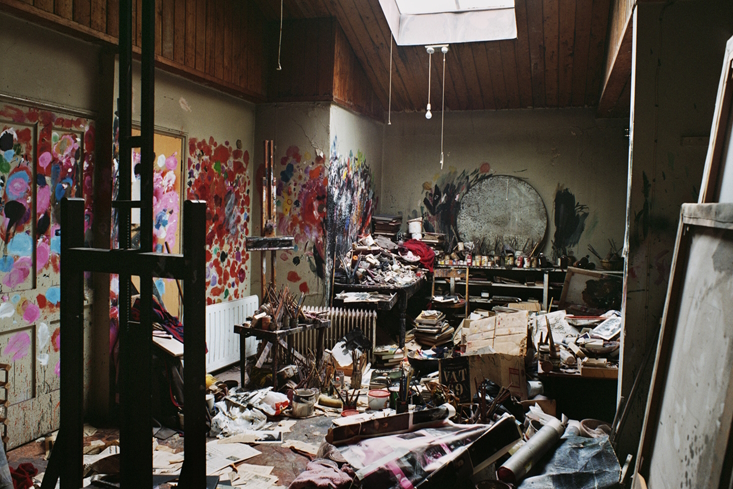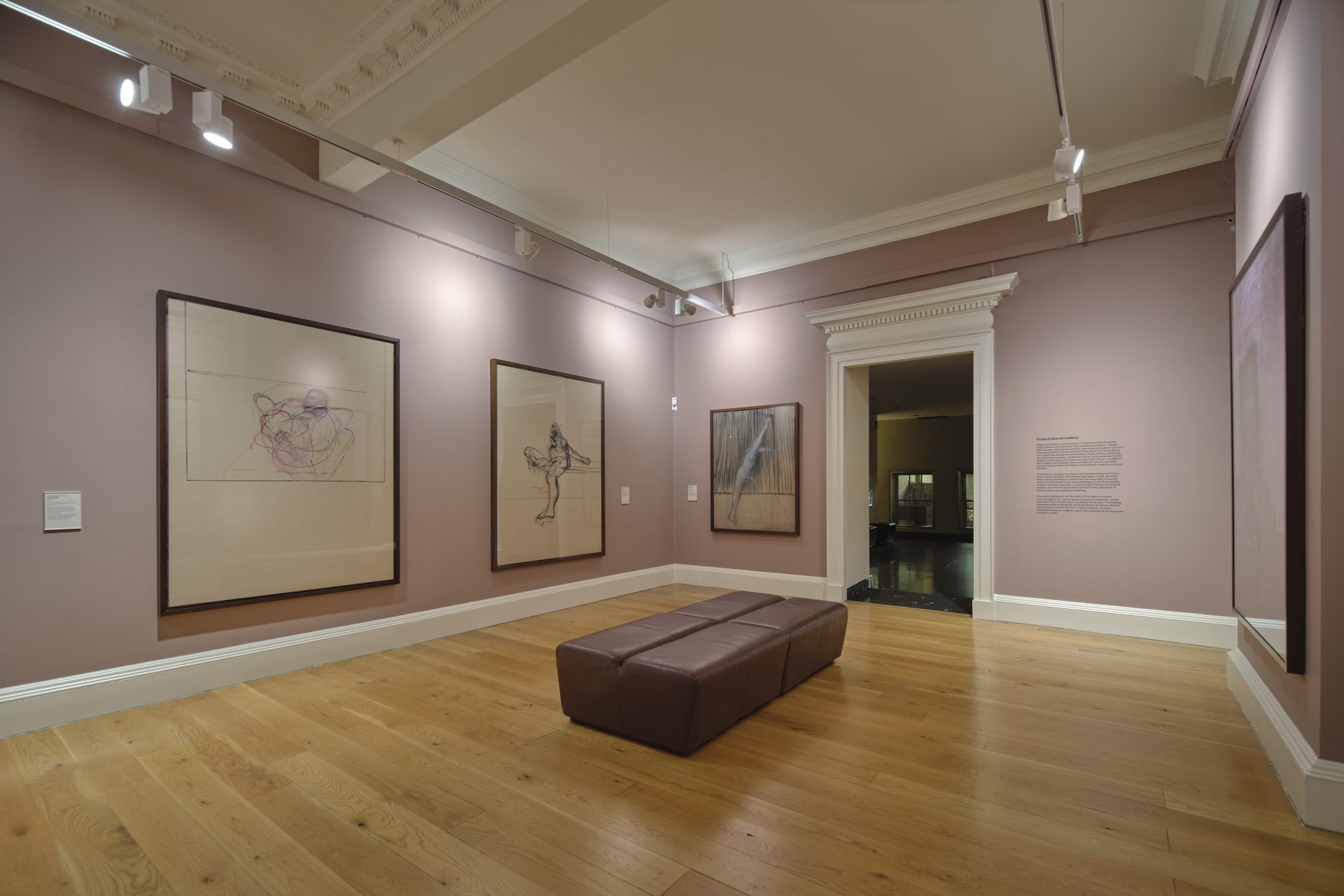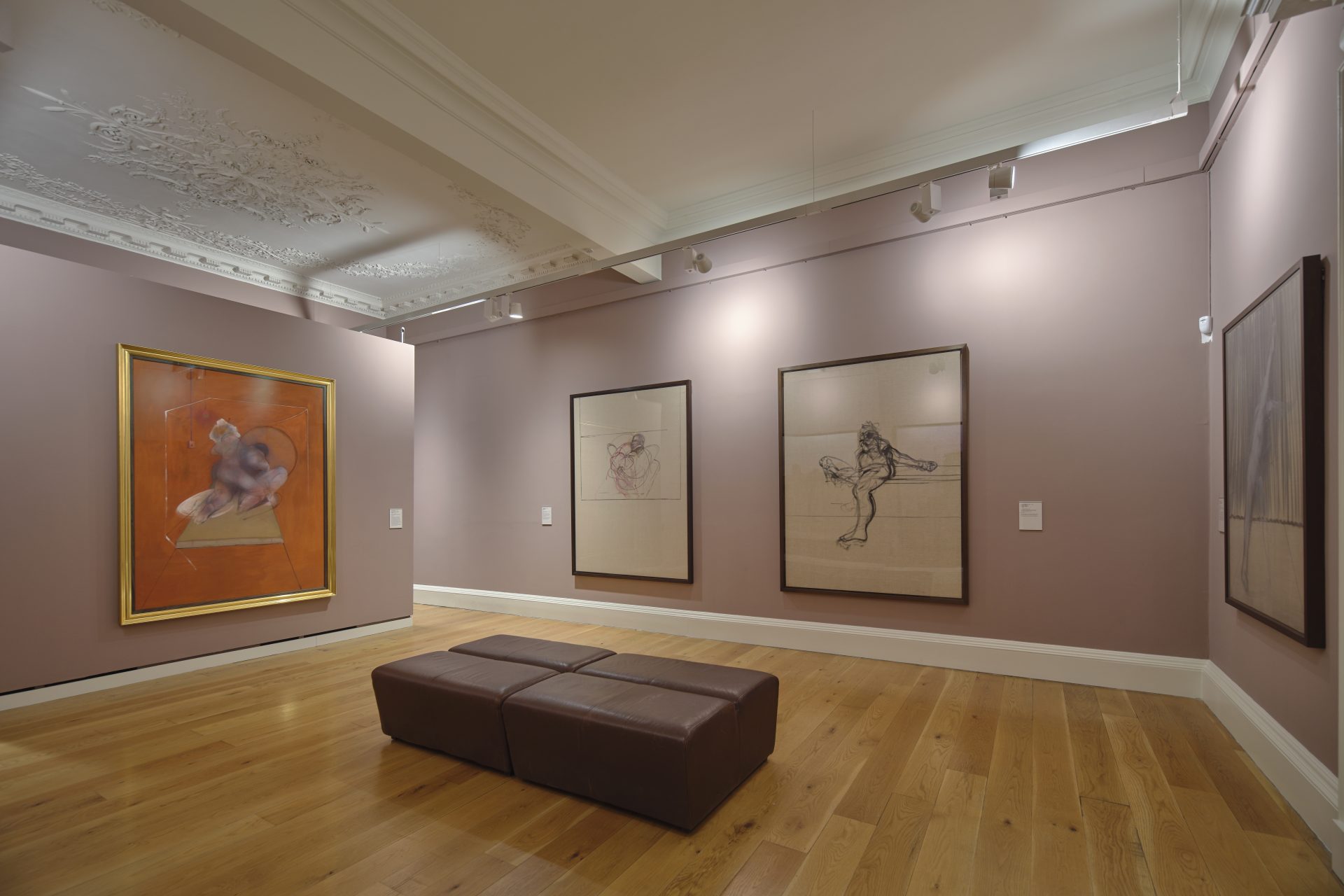A visit to Francis Bacon’s Studio at Hugh Lane Gallery gives you a unique opportunity to experience the working process of one of the twentieth century’s greatest artists.
Born in Dublin in 1909, Bacon grew up in county Kildare. He left home at the age of sixteen and eventually settled in London where he established himself as one of the leading international artists of his generation. Bacon moved into 7 Reece Mews, London, in 1961 where he lived and worked until his death in 1992.
In 1998, director Barbara Dawson secured the donation of Francis Bacon’s studio from the artist’s heir, John Edwards, and Brian Clarke, executor of the Estate of Francis Bacon. Her vision was to remove the entire studio including all of the items without exception, as well as the architectural features, and relocate the studio as it was, to the Hugh Lane Gallery.
In the August of that year, as project manager, she assembled a team of conservators, curators, and archaeologists to carry out the move. The archaeologists made survey and elevation drawings of the small studio, mapping out the spaces and locations of all the objects, while the conservators prepared the works for travel and curators tagged and packed each of the items, including the dust. The walls, doors floor and ceiling were also removed.
-
Francis Bacon Archive
Over 7,000 items were retrieved, and, over the next three years, these were catalogued and digitised onto a bespoke database. The archive includes approximately 570 books and catalogues, 1,500 photographs, 100 slashed canvases, 1,300 leaves torn from books, 2,000 artist’s materials and 70 drawings, along with correspondence, magazines, newspapers, and vinyl records.
The Hugh Lane Gallery’s relocation of Francis Bacon’s studio and compilation of a fully comprehensive database of the entire contents has significantly contributed to new scholarship on the artist. Items from the archive have been included in almost all retrospective exhibitions of Bacon’s work ever since.
The database is open to researchers by appointment. Researchers wishing to consult the Francis Bacon archive should provide a letter of introduction or recommendation. For research enquiries please email Logan Sisley at [email protected].
-
Visiting the Bacon Studio
Visiting the Bacon studio is a visceral experience. Standing in the doorway the visitor can sense the chaos in which Bacon created some of the greatest figurative paintings of the 20th century. The windows to the right reveal a full-length view of the chaotic studio from behind the easel, where empty boxes advertising household goods as well as fine wines and champagne were dumped. Looking through the window, visitor catches their reflection in the circular mirror at the north end of the room as they survey the space, with paint pots, photographs, books, magazines, and upended boxes strewn across the floor and heaps of cut out canvases jammed onto the shelves.
In an adjacent gallery, on screen, the visitor can listen to descriptions of the artist’s life and items from the archive. Beyond that, in the Bacon gallery, is a unique collection of Bacon’s work in various stages of completion, including the last unfinished painting which he was working on when he died. You can also listen to Bacon discussing his work in a fascinating interview recorded with Melvyn Bragg in 1985.
-
Hugh Lane Gallery Exhibitions
Francis Bacon: A Terrible Beauty, 2009, curated by Barbara Dawson and Martin Harrison.
Francis Bacon in Dublin, 2000, curated by David Sylvester.
-
Francis Bacon Archive Displays
Bacon’s Portraits of Women: Moraes, Belcher and Rawsthone, 2025.
Francis Bacon and the Art of Ancient Egypt: A Selection from his Library, 2019-2020.
Francis Bacon’s Paintings, 2016.
Francis Bacon and the Art of the Past, 2014-2015.
Francis Bacon’s Library, 2014.
Francis Bacon and Conflict, 2013-2014.
New Display of Photographs of Lucian Freud from Francis Bacon’s Studio, 2013-2014.
Francis Bacon: Art Books, 2011.
Francis Bacon and Bullfighting, 2010-2011.
Francis Bacon and Street Life. 2010.
The Artist and His Oeuvre, 2009-2010.
Francis Bacon Studio Display Cases, 2009.
Francis Bacon Studio Display Cases: Illustrated Sporting Images, 2009-2009.
-
Further Resources
Hugh Lane Gallery’s education team has prepared a Francis Bacon Studio A Resource for Leaving Certificate Studio
Francis Bacon’s Studio at Hugh Lane Gallery is part of the Artist’s Studios Network.









